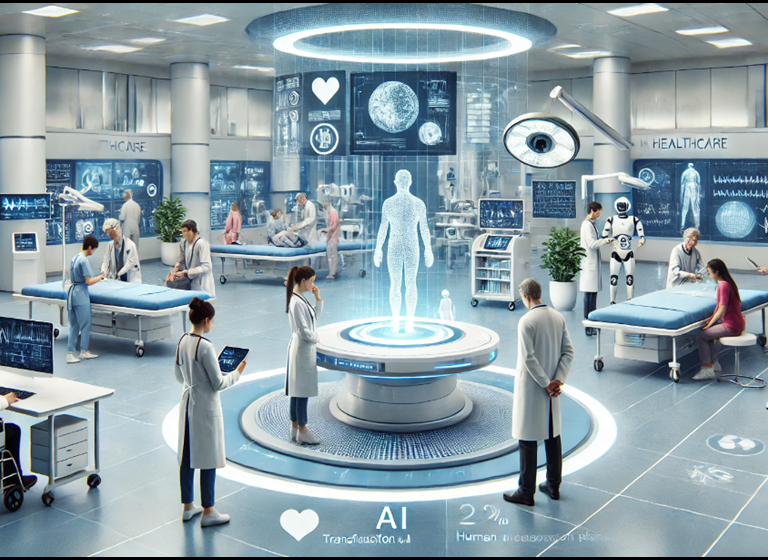
Machine learning (ML) is a branch of artificial intelligence (AI) that allows computers to learn without being explicitly programmed. Instead, they learn by analyzing data and identifying patterns. This enables them to make predictions or decisions on new data.
How Does It Works ?
Here’s a simplified breakdown of how it works:
- Data is provided: The first step involves feeding the machine learning algorithm with data. This data can be anything from text and images to numbers and audio.
- Algorithms learn patterns: The algorithm analyzes the data to identify patterns and relationships. There are different types of machine learning algorithms, each suited for different tasks. For instance, some algorithms excel at classifying data (like spam filters sorting emails), while others are better at making predictions (like recommending products on an online store).
- Model is built: Based on the identified patterns, the algorithm builds a model. This model essentially represents the computer’s understanding of the data.
- Model is tested and refined: The model is then tested with new data to see how accurate its predictions are. If the results aren’t ideal, the algorithm is adjusted and the model is rebuilt. This iterative process of training and testing helps refine the model’s accuracy over time.
- Making predictions: Once the model is satisfactory, it can be used to make predictions or classifications on entirely new data.
Machine Learning Methods:
Machine learning methods can be broadly categorized into three main approaches depending on how they interact with data for learning:
1) Supervised Learning:
This is like learning with a teacher. You provide the algorithm with data that has both inputs and desired outputs (labels). The algorithm analyzes this data to learn the relationship between the inputs and outputs. Then, it can use this knowledge to predict the output for new, unseen data. Some common supervised learning methods include:
- Regression: Used for predicting continuous values, like house prices or stock prices.
- Classification: Used for categorizing data points, like classifying emails as spam or not spam.
2) Unsupervised Learning:
This is like exploring the world on your own. You provide the algorithm with data that lacks predefined labels. The algorithm then tries to find hidden patterns or structures within the data. This can be useful for tasks like:
- Clustering: Grouping similar data points together, like grouping customers with similar purchase history.
- Dimensionality Reduction: Simplifying complex data by reducing the number of features (variables) used, while still preserving important information.
3) Reinforcement Learning:
This is like learning through trial and error. The algorithm interacts with an environment and receives rewards or penalties for its actions. Over time, it learns to take actions that maximize the rewards. This is a powerful approach for training AI agents to perform tasks in complex environments.
Common Machine Learning Algorithims:
Supervised Learning :
1. Linear Regression: This is a workhorse algorithm for predicting continuous values based on a linear relationship between features. It’s widely used for tasks like forecasting sales or analyzing trends.
2. Logistic Regression: Similar to linear regression, but for predicting categorical outcomes (yes/no or multiple categories). It’s a popular choice for classification problems like spam filtering or credit risk assessment.
3. Decision Tree: This algorithm creates a tree-like structure where each branch represents a decision based on a feature. It’s easy to interpret and useful for classification tasks.
4. Support Vector Machine (SVM): SVMs excel at finding the best separation line (or hyperplane) to divide data points into different categories. They are known for their good performance even with limited data.
5. Naive Bayes: This probabilistic classifier works well for tasks where features are independent of each other. It’s efficient for large datasets and text classification.
6. k-Nearest Neighbors (kNN): This algorithm classifies data points based on the majority vote of its k nearest neighbors in the training data. It’s simple to implement but can be computationally expensive for large datasets.
7. Random Forest: This ensemble method combines multiple decision trees to improve overall accuracy and robustness. It’s a powerful tool for both classification and regression tasks.
8. Gradient Boosting: This family of algorithms trains models in a sequential way, focusing on improving the model’s performance on past errors. XGBoost and LightGBM are popular examples.
Unsupervised Learning :
1. K-Means Clustering: This is a widely used clustering algorithm that groups data points into a predefined number (k) of clusters based on their similarity.
2. Principal Component Analysis (PCA): This dimensionality reduction technique helps identify the most significant features in a dataset, which can be useful for visualization and data compression.
Real- World Machine Learning Use-Cases:
Speech recognition:
It is also known as automatic speech recognition (ASR), computer speech recognition, or speech-to-text, and it is a capability which uses natural language processing (NLP) to translate human speech into a written format. Many mobile devices incorporate speech recognition into their systems to conduct voice search—e.g. Siri—or improve accessibility for texting.
Computer Vision:
Computer vision is a field of AI that equips computers with the ability to see and understand the world through images and videos. By leveraging machine learning and deep learning techniques, computer vision can perform tasks like object detection (spotting cars on a road), image classification (sorting photos by content), and even facial recognition. This technology is having a major impact on various industries, from self-driving cars to medical diagnostics, and is constantly evolving to bring new applications to life.
Recommendation engines:
Recommendation engines are like digital concierges, using clever algorithms to suggest things you might like. They analyze your past behavior (purchases, browsing history, ratings) and consider similar users’ preferences to predict what content or products you’d be interested in. This personalized approach benefits both users (discovering relevant items) and businesses (boosting sales and engagement). Popular examples include Netflix’s movie recommendations and Amazon’s product suggestions






